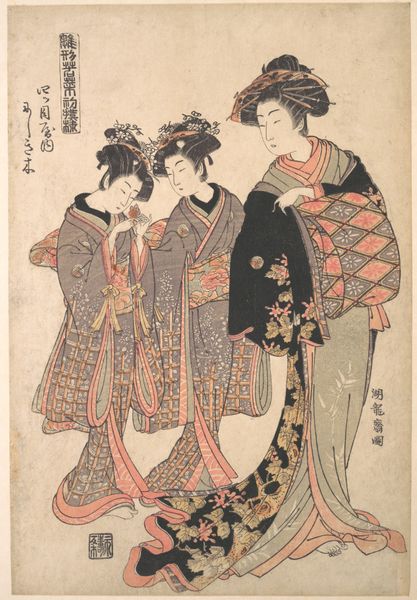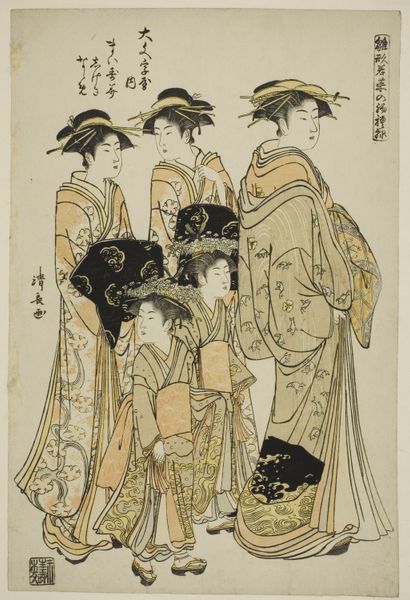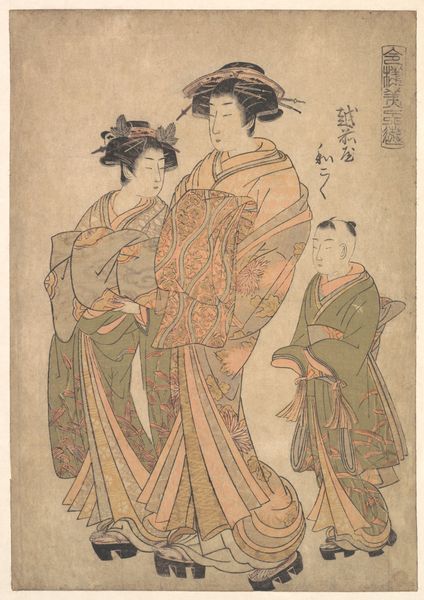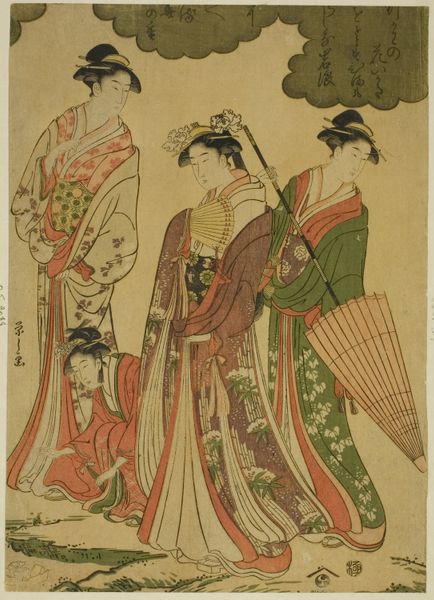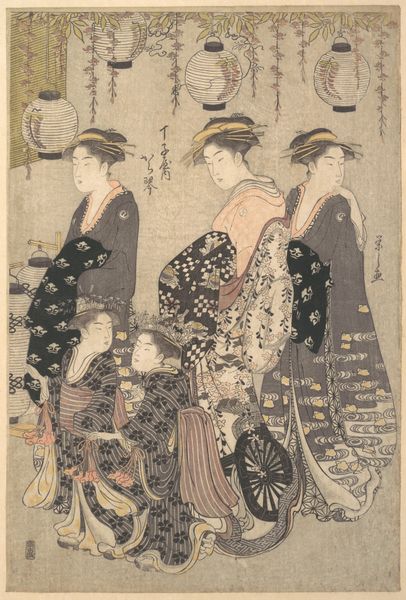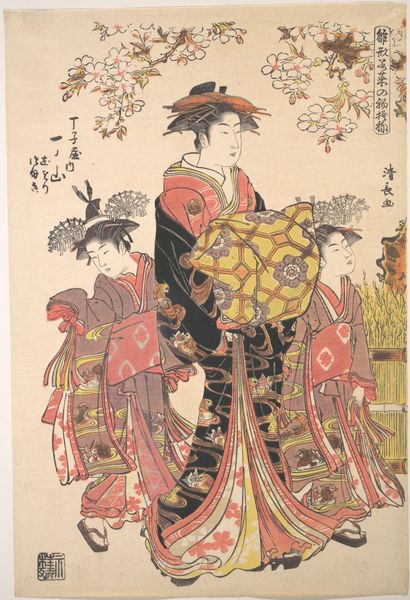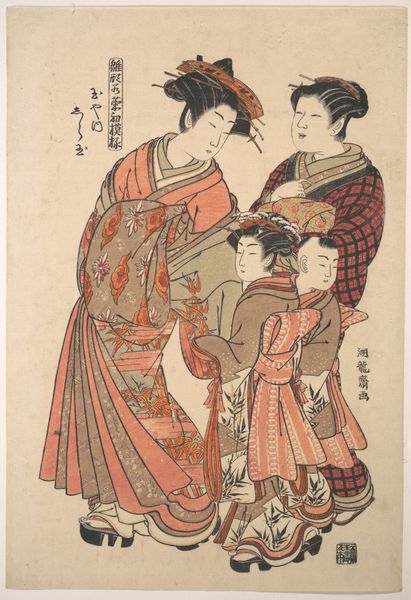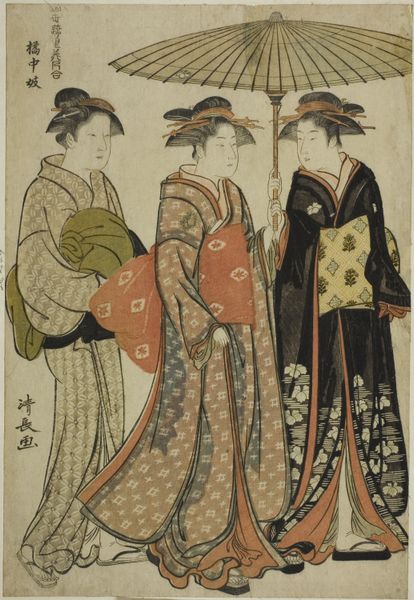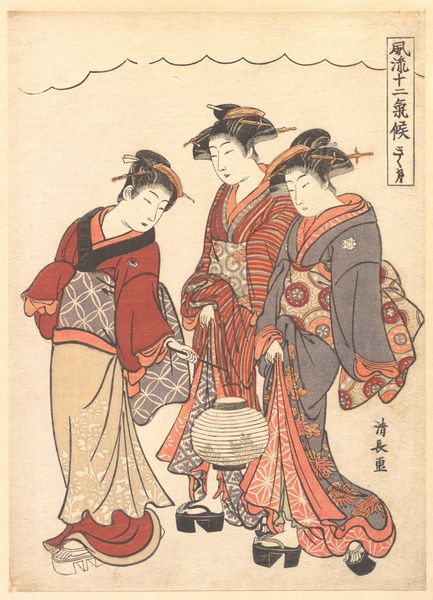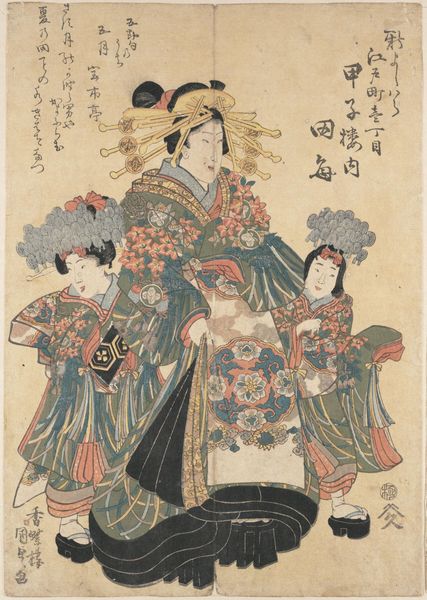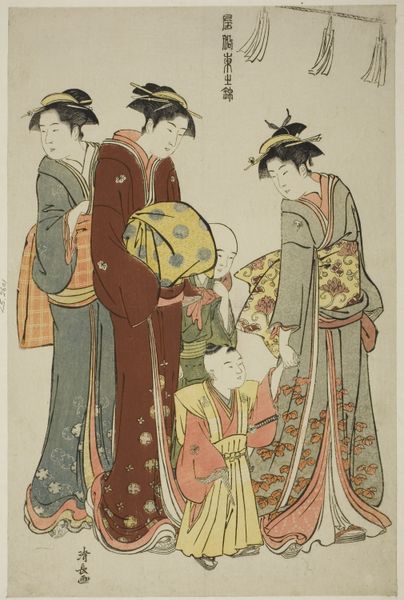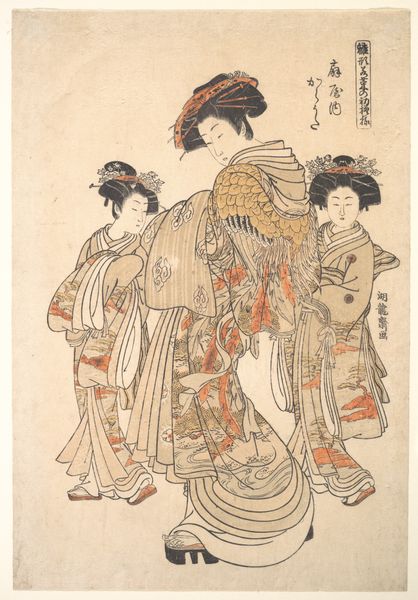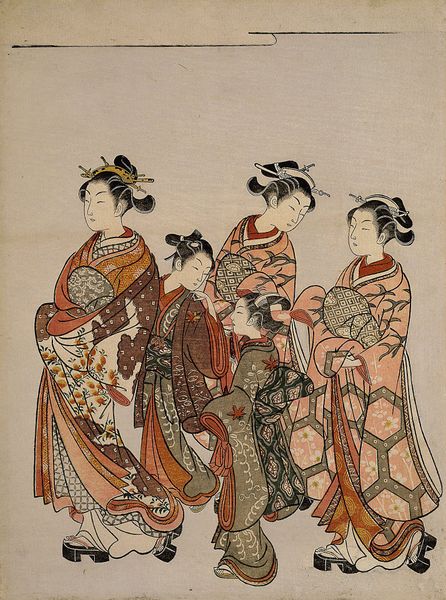
The Courtesan Wakakusa of the Chōjiya Brothel, and Attendants Asano and Midori, from the series “A Pattern Book of the Year’s First Designs, Fresh as Spring Herbs” (Hinagata wakana no hatsumoyō) 1773 - 1793
0:00
0:00
print, woodblock-print
# print
#
asian-art
#
ukiyo-e
#
figuration
#
woodblock-print
#
genre-painting
#
erotic-art
Dimensions: 15 x 10 1/8 in. (38.1 x 25.7 cm)
Copyright: Public Domain
Curator: Standing before us is "The Courtesan Wakakusa of the Chōjiya Brothel, and Attendants Asano and Midori, from the series ‘A Pattern Book of the Year’s First Designs, Fresh as Spring Herbs’" by Torii Kiyonaga, dating to the late 18th century. This piece, currently held at The Metropolitan Museum of Art, employs woodblock printing to render a vivid tableau. What strikes you first about this image? Editor: It's strikingly serene. There's a quiet elegance despite the intricate details in the garments and hairstyles. The subdued color palette really contributes to this overall effect of subdued opulence. Curator: Absolutely. And the motifs that embellish their robes—the cranes, the bamboo—aren’t mere decorations. The crane symbolizes longevity and good fortune, an enduring desire embedded within Japanese cultural values, while bamboo can be regarded as resilient yet flexible. In that era, how might that combination be read? Editor: You raise a potent point about societal dynamics and readings. One has to also consider these brothels as central components of urban economies during this period, almost like pleasure districts in their own right. Wakakusa and her attendants weren't just pretty faces; they occupied an influential spot within this floating world, this "ukiyo." These designs—on garments—became aspirational fashion among certain demographics in Edo society. So there’s interplay of class and cultural influence. Curator: That influence can't be overstated. Notice, too, the gazes—the figures don’t directly address us. Instead, their look evokes an air of introspection, or perhaps detachment, inviting us to observe them without intrusion. And the positioning of the two younger attendants—Asano and Midori—reinforces societal hierarchies. Editor: I concur. Furthermore, this wasn't simply about aesthetics. Consider that courtesans held artistic influence—they possessed artistic skill, as patrons, in addition to being performers, themselves. So ukiyo-e weren't created within an elitist bubble removed from those whom they depicted, but as co-constitutive products. It’s quite the symbiotic feedback loop. Curator: Indeed. A cultural landscape painted, printed, and circulated for enjoyment, status, and artistic expression. I never fail to appreciate the subtle ways art carries the echoes of a society's ambitions and complexities. Editor: As an exploration, Kiyonaga's composition serves a great reminder to look beyond the superficial allure into social roles and dynamics encoded within the very designs meant to seduce. It becomes quite the narrative.
Comments
No comments
Be the first to comment and join the conversation on the ultimate creative platform.
